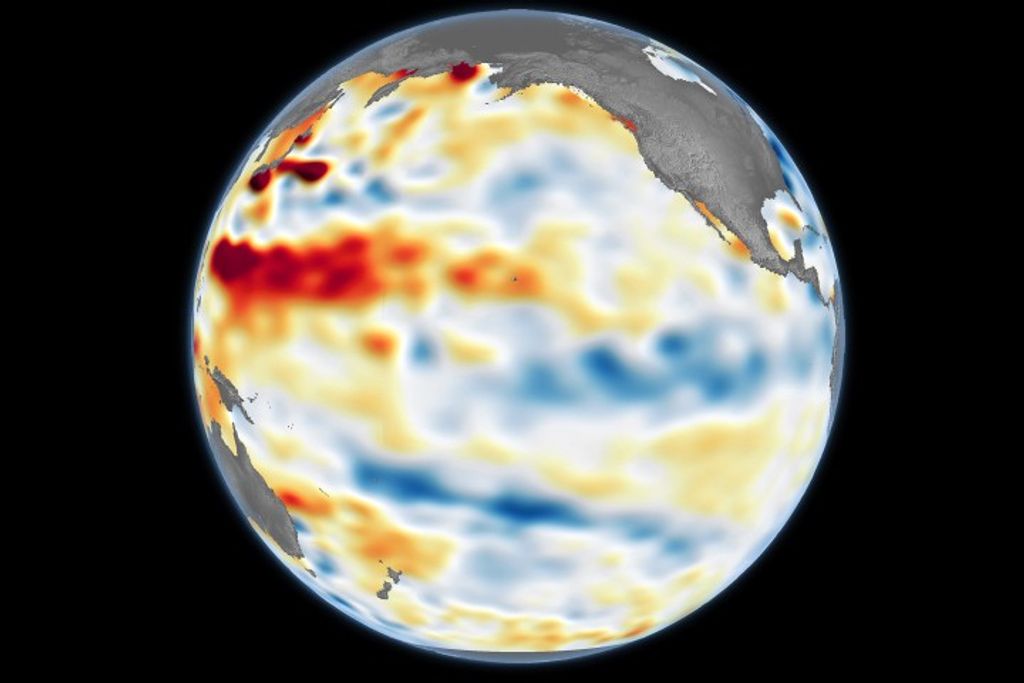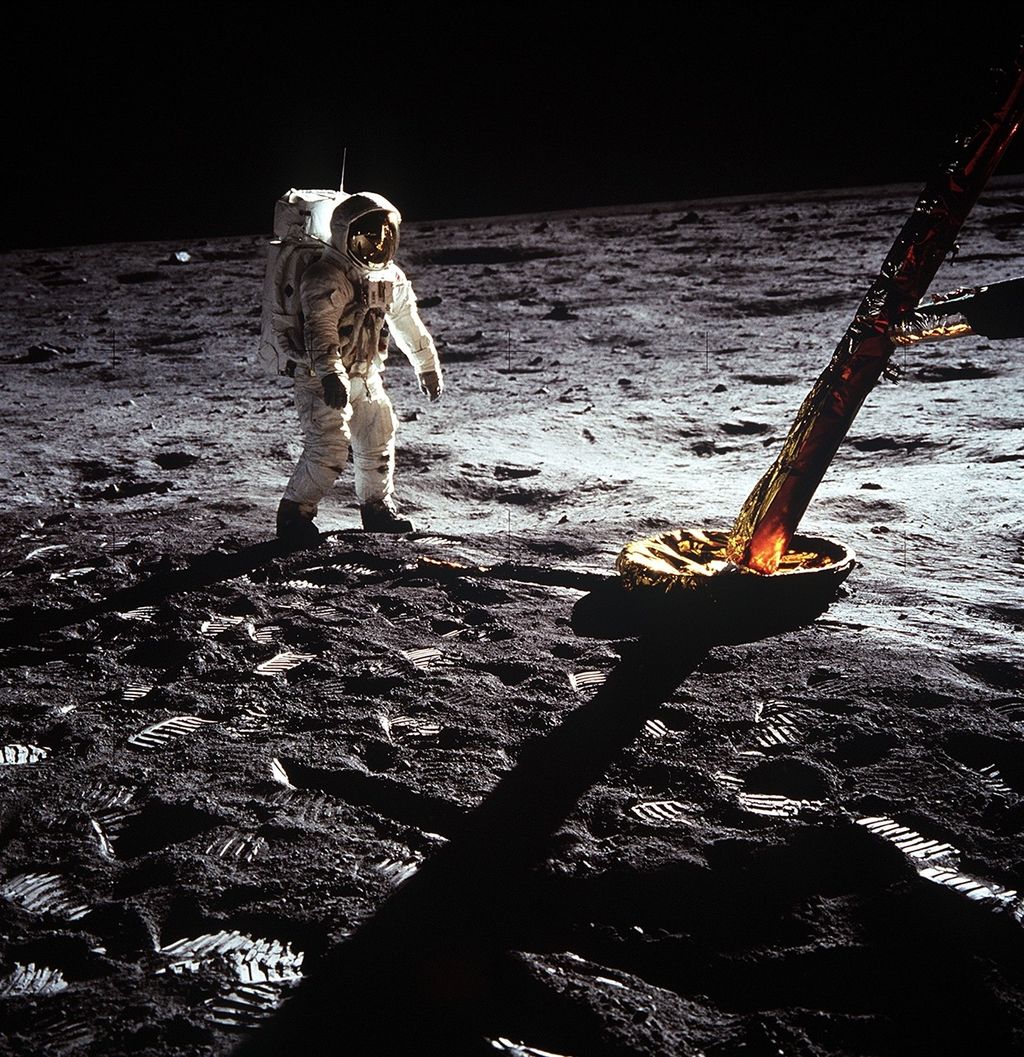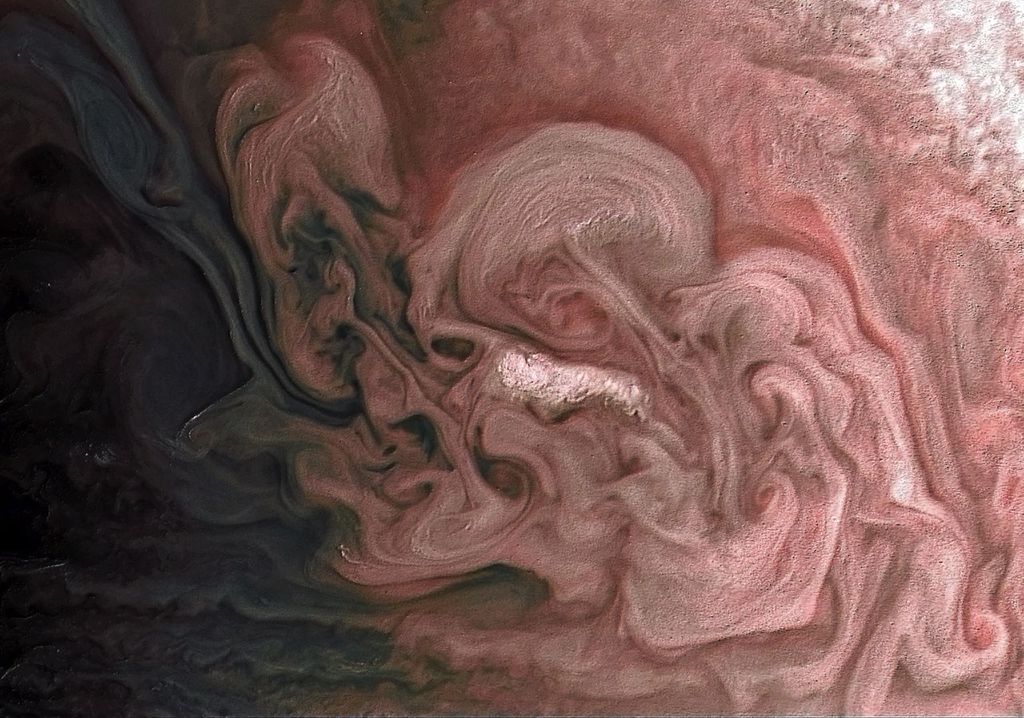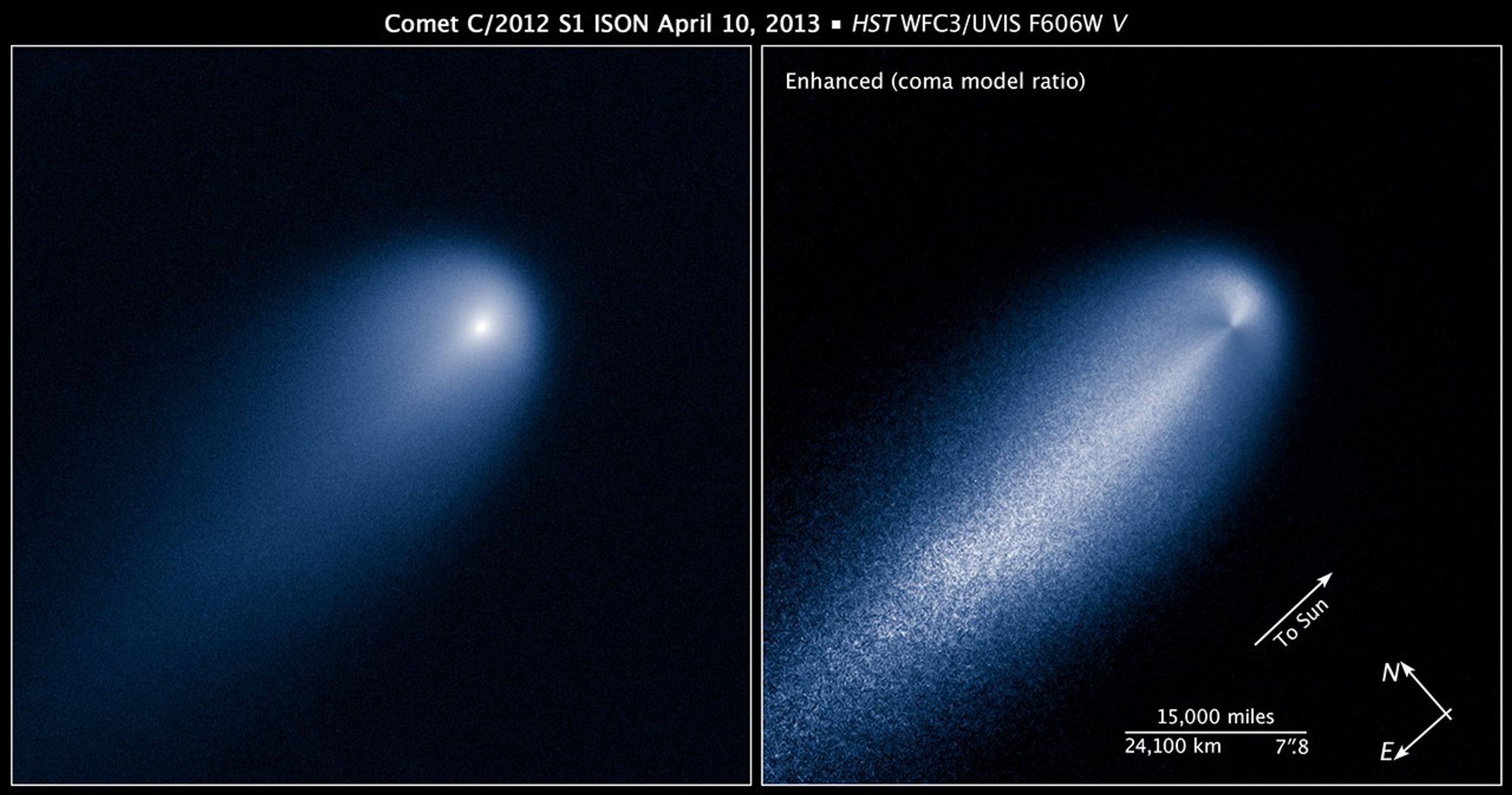1 min read
Enhanced Hubble Image of Comet ISON

This is a contrast-enhanced image produced from the Hubble images of Comet C/2012 S1 (ISON) to reveal the subtle structure in the inner coma of the comet. In this computer-processed view, the Hubble image has been divided by a computer model coma that decreases in brightness proportionally to the distance from the nucleus, as expected for a comet that is producing dust uniformly over its surface. ISON's coma shows enhanced dust particle release on the sunward-facing side of the comet's nucleus, the small, solid body at the core of the comet. This information is invaluable for determining the comet's shape, evolution, and spin of the solid nucleus.
About the Object
- DistanceDistanceThe physical distance from Earth to the astronomical object. Distances within our solar system are usually measured in Astronomical Units (AU). Distances between stars are usually measured in light-years. Interstellar distances can also be measured in parsecs.At the time of the Hubble observation, the comet was 4.15 astronomical units (386 million miles) from the Sun. The comet was 4.24 astronomical units (394 million miles) from Earth.
About the Data
- Data DescriptionData DescriptionProposal: A description of the observations, their scientific justification, and the links to the data available in the science archive.
Science Team: The astronomers who planned the observations and analyzed the data. "PI" refers to the Principal Investigator.The image was created from Hubble data from proposal 13198: J.-Y. Li (Planetary Science Institute), P. Lamy (Laboratoire d'Astrophysique de Marseille), H. Weaver (JHU/APL), M. A'Hearn and M. Kelley (University of Maryland), M. Knight (Lowell Observatory), T. Farnham (University of Maryland), and I. Toth (Hungarian Academy of Sciences). - InstrumentInstrumentThe science instrument used to produce the data.HST>WFC3/UVIS
- Exposure DatesExposure DatesThe date(s) that the telescope made its observations and the total exposure time.April 10, 2013
- FiltersFiltersThe camera filters that were used in the science observations.F606W (V)
- Object NameObject NameA name or catalog number that astronomers use to identify an astronomical object.Comet ISON
- Object DescriptionObject DescriptionThe type of astronomical object.Comet
- Release DateApril 23, 2013
- Science ReleaseHubble Captures Comet ISON
- Credit

Color Info
Color InfoA brief description of the methods used to convert telescope data into the color image being presented.
This image was originally black and white and recorded only overall brightness. These brightness values were translated into a range of bluish hues. Such color "maps" can be useful in helping to distinguish subtly varying brightness in an image.

Compass and Scale
Compass and ScaleAn astronomical image with a scale that shows how large an object is on the sky, a compass that shows how the object is oriented on the sky, and the filters with which the image was made.
Related Images & Videos

Hubble Captures Comet ISON
This NASA Hubble Space Telescope image of Comet C/2012 S1 (ISON) was photographed on April 10, when the comet was slightly closer than Jupiter's orbit at a distance of 386 million miles from the Sun (394 million miles from Earth). Even at that great distance the comet is already...
Share
Details
Last Updated
Aug 17, 2025
Contact
Media
Claire Andreoli
NASA’s Goddard Space Flight Center
Greenbelt, Maryland
claire.andreoli@nasa.gov































